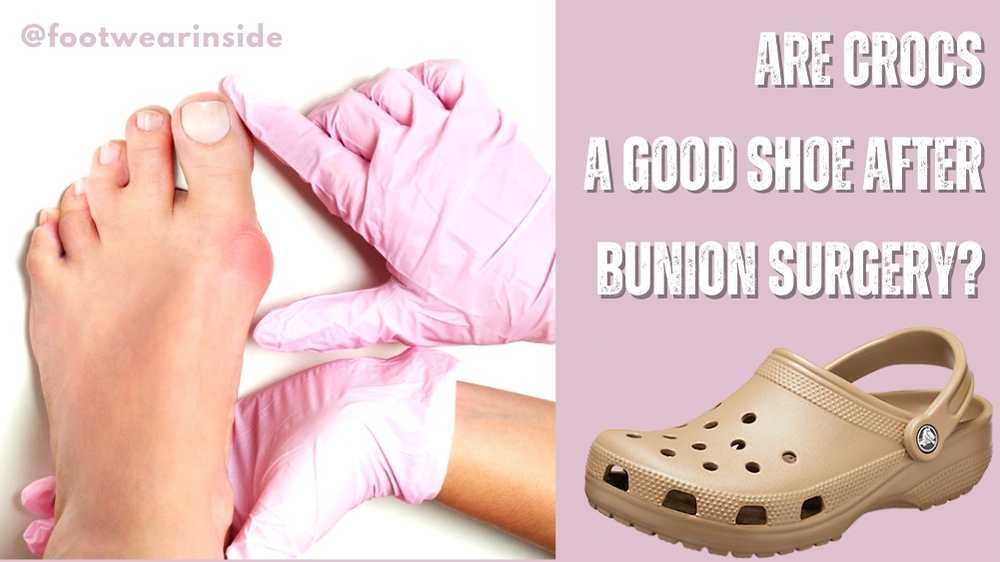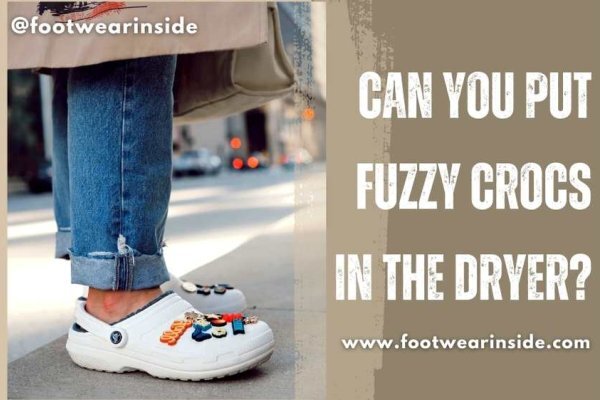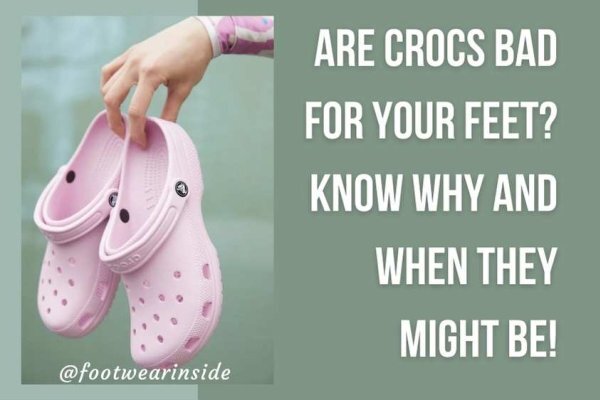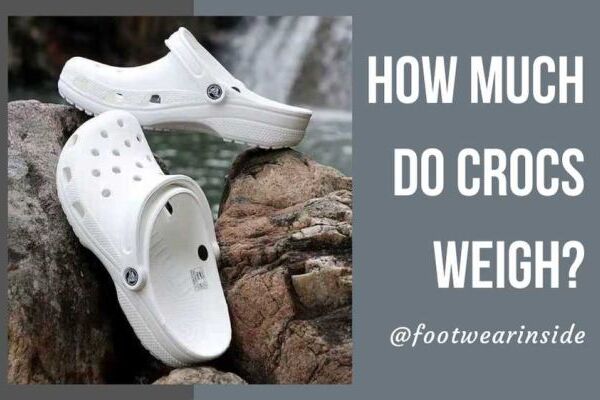Are crocs a good shoe after bunion surgery? Yes, crocs are a good shoe after bunion surgery as these shoes come with a wide box & comfy footbed. As the wide box provides a broader fitting and enough space for big toe joints, crocs are comfortable for bunion surgery patients.

Last month, I had bunion surgery. Initially, I faced a few issues with regular shoes. As an orthopedic surgeon suggested, I sought soft or wider-fitting shoes to relieve my bunion pain. Hence, I picked the crocs that were very supportive of my feet and helpful in relieving my foot pain.
Crocs are remarkable for their arch support and come with a soft upper part which can improve the foot condition after surgery. Confused about wearing crocs after bunion surgery? Go through our detailed guide to clarify quickly and get comfy walking for hours.
What Are The Best Shoes To Wear After Bunion Surgery?
While dealing with bunion surgery, Lisa Key from Solebliss suggests wearing supportive, leather, wide & deep toe, and flat shoes. As these shoes maintain the correct foot position and prevent rubbing, they are perfect shoes after bunion surgery. Let’s have a look at these shoes in detail.

Wear Supportive Shoes
After bunion surgery, it is ideal to wear supportive shoes to ensure support to the entire foot. In fact, shoes with heel and arch support can keep the foot in the correct position. As proper position can distribute the pressure on the whole shoe, it can enhance balance and improve the posture to heal bunions.
When you’re hitting a surface, the impact of shock can worsen bunion surgery. Now, shoes with a shock-resistant sole can absorb the shock to reduce the effect of uneven surfaces. As a result, supportive shoes help to heal the feet after bunion surgery.
Leather Shoes
If you’re dealing with bunionectomy, the soft & flexible material of the shoes can help to heal the wounds. In fact, a comfy material prevents the rubbing of feet and toe joints. hence, a leather shoe can meet the requirements after bunion surgery.
On top of that, the breathable design of shoes can maintain aeration inside the upper. Due to such build-up, these shoes can keep feet cool and maintain comfort for a longer time. That’s why leather shoes are the best option to pick with a bunionectomy.
Shoes With Wide & Deep Toe
While going through bunion surgery, it is a must to wear shoes that keep feet relaxed, especially the inflamed big toe joint. We suggest wearing shoes with wide and deep toe boxes to prevent excessive pressure on the toe.
Now, a broad & deep toe box can offer enough room for the toe to eliminate issues like rubbing or pressure. Besides, the round-shaped toe box maintains the distance from the upper surface. As a result, these shoes can offer breathability and keep the toe joint relaxed for a longer time.
Flat Shoes
The pressure on the front area of the foot depends on the shoe’s height. In fact, a high hill shoe can create extreme pressure on the big toe joint.
If you recently went through a bunionectomy, then pressuring the toe joint may lead to severe injuries. But, a flat shoe won’t pressure the toe to relax the feet for hours. As a result, always pick flat shoes to recover the bunion surgery quickly.
Why Is Proper Footwear Essential After Bunion Surgery?
Proper footwear is a must to improve the condition of bunion surgery. According to Dr. Aaron Matthew, the condition may worsen quickly without the perfect footwear.

Now, shoes with good traction can avoid slipping issues and prevent rubbing of the big toe with the upper. Besides, the breathability maintains the air circulation inside the shoes, which helps to recover the toe faster. Even the odor or germ build-up in shoes can cause severe issues with the surgery. Hence, it is better to pick a breathable shoe to avoid such issues after surgery.
In addition, the memory foam of the shoes keeps the feet in a comfy position that decreases the pressure on the toe. Besides, these foams can absorb the shock and increase the support to the feet. As a result, a perfect supportive foot can help the bunionectomy recovery.
Further, the proper fitting comes with a bit of space on the front. Due to such a broad design, these shoes can reduce the risk of post-operative swelling. That’s why proper footwear is essential to improve the condition quickly after bunion surgery.
How To Prepare For Bunion Surgery
For the preparation process, the doctor gives a few tests to check the organs to ensure their health condition. Tests include an electrocardiogram or x-ray, blood test, and urine test to confirm the underlying medical conditions. First of all, the x-ray checks the condition of the heart and lungs.
On top of that, blood and urine tests are to check the general health. Moreover, avoid taking medicines that may thin the blood. On the day of surgery, stop taking food or drinks before a dew our the surgery. If you follow the doctor’s instructions, you can avoid any complications.
When Can I Start Wearing Shoes After Bunion Surgery?
Most Orthopedic Surgeon suggests wearing shoes after six weeks of bunion surgery. In fact, the time range depends on the surgery type. Sometimes it takes six to twelve weeks to recover after bunion surgery. At this time, the bunion heals and leads to the recovery of the soft tissue.
However, Dr. Robby Amiot states that it is a must to wear surgical shoes following surgery. Besides, he suggests taking the support of crutches to assist you in walking. Standing on your foot after the surgery is challenging as you can’t put all the weight on it.
When you can stand straight on your foot and move efficiently, you should pick a pair of shoes according to the doctor’s recommendation. Also, the shoe must be made of soft materials and protective cushioning. Further, a supportive insole and soft upper shoe suit bunion surgery patients. Hence, choosing the right pair of shoes helps to recover early.
Can You Wear Crocs With Bunions?
Yes, Abdullah Ali states that it is good to wear Crocs with bunions due to the wide toe and comfy features. Firstly, crocs offer excellent arch support, which is essential for preventing bunion pain. Again, these shoes have enough cushion inside the shoe and better support your feet while walking.

In addition, crocs come with quality materials like croslite that keep the feet comfy and secure. Alongside, crocs are roomy enough to move the big toe freely. As a result, crocs are a good option for saving the feet from worsening bunions.
Moreover, the shoes are breathable and keep the feet odor-free due to their holes. It’s so helpful during bunions as the feet need much air circulation. Also, the lightweight feature makes the shoes perfect for a bunion patient.
Further, the crocs are lightweight, which is fine for the bunion’s feet. Even the design won’t give any stress to the feet while walking. It is better to take the doctor’s advice before taking shoes while you have a bunion.
Which Crocs To Wear During Bunion Recovery?
During a bunion, it is a must to pick suitable crocs that are vital to recovery. Now, crocs come with multiple designs to take special aftercare for bunion patients.
First, we can talk about the Crocs Duet sport clog shoe. This shoe has a supportive back strap to secure your feet. Also, the shoe is slip-resistant and provides advanced toe box ventilation.
Next, Crocs men’s Yukon Vista clog is another version of crocs shoe. It has an adjustable hook and loop, which help to fit the shoes comfortably. Alongside, the extra roomy feature of the shoe keeps the feet free. Moreover, Crocs women’s Classic printed leopard-lined clog provides a warm feeling and comfortable walking.
Again, the Crocband platform clog version of Croc is another suitable option for bunion recovery for its comfort technology. In fact, the comfy design of the shoe is excellent for relieving pain instantly.
How Long Does Bunionectomy Recovery Take?
Usually, the Bunionectomy takes around six weeks for recovery. From Dr. Ferguson, the operated bones take about six to twelve weeks to heal. Even the pain and swelling will recover in this time frame. Actually, the recovery time depends on your age, lifestyle, and bunion types. Also, follow the post-surgery instructions to recover quickly.
However, bunionectomy takes time intervals to recover fully. Zero to 1 week is the most crucial period to keep resting the patient’s foot, icing, and mainly elevating the foot. After 1 to 6 weeks, start weight bearing like wearing a tall boot.
At the same time, try to increase the activity level. It is wise to wear quality shoes and improve your walking activity in 6 to 10 weeks. If you follow the instructions, it can help to recover entirely in 3 to 4 months.
What Shoes Make Bunions Worse?
According to Apex Foot Health, shoes with tight designs, high-heeled, and pointed-toe boxes can worsen bunions. Hence, these types of shoes are the worst choices for bunions. Let’s have a look at the reasons.
Tight And Unsupported Shoes
Unsupported shoes with tight designs increase bunion pain as it’s not roomy enough to keep the toe freely. Also, you can’t wiggle your toes comfortably while wearing tight shoes. As a result, these tight shoes can make the bunion worse.
High-Heeled Shoes
High-heeled shoes push the toes forward into an abnormal position, creating an unnatural shape. Again, these shoes increase the pressure on the toes to cram together and bear the body’s total weight, which is exceptionally bad for bunion surgery.
Pointed-toe Boxes shoes
Pointed toe boxes and narrow shoes can’t give big toe joints enough space, which makes the bunion worse. Also, the design forces the toes together and increases the bunion pain.
Final Words
Let’s warp up the detailed guide. Crocs come with comfy features for bunions, like soft material, breathable, lightweight, roomy toe box, and cushioned sole. If you continue wearing crocs after bunion surgery, it offers a quick recovery and comfort with easy movement.
Also, the correct fitting of a croc can relieve your bunion pain. In fact, we suggest wearing crocs with a bunion to prevent discomfort while walking. So, pick a well-fitted croc after the bunion surgery to get comfortable walking and enjoy some painless hours!




